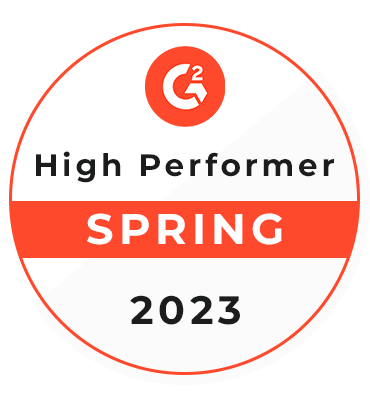The Comprehensive Guide of Fitness Application Development
Manish Kumawat
Last Updated on: 07 March 2024
Chapter 1: Understanding the Fitness App Landscape
The fitness app industry is thriving like never before. In an era where health-conscious individuals are eager to track and improve their well-being, fitness apps have become indispensable. To embark on a successful fitness app development journey, it's crucial to comprehend the current landscape, market trends, and user expectations.
Market Trends in Fitness Apps
The fitness app landscape is continually evolving, driven by technological advancements and user demands. Here are some notable market trends:
- The Rise of Wearables:Fitness apps increasingly integrate with smartwatches, fitness trackers, and other wearable devices to provide real-time data and personalized insights.
- Personalization:Users expect tailored workout routines and nutrition plans that align with their fitness goals. Personalized content is a key driver of user engagement.
- Integration with Social Media: Fitness enthusiasts love to share their achievements, workout sessions, and progress on social media platforms. Integrating social sharing features can enhance user engagement.
- Nutrition Tracking:Many fitness apps now offer features for calorie counting, meal planning, and tracking macronutrients. This holistic approach to health is gaining popularity.
- Mental Health and Wellness:Users are looking for apps that address stress management, sleep improvement, and mindfulness. These features are becoming essential for a well-rounded fitness app.
Popular Fitness Apps
To understand the competition and benchmark your app's potential success, it's crucial to be aware of popular fitness apps in the market:
- MyFitnessPal:Known for its comprehensive calorie and nutrition tracking features, MyFitnessPal has a large and dedicated user base.
- Fitbit: As a pioneer in wearable fitness technology, Fitbit provides users with detailed activity tracking, sleep analysis, and more.
- Strava:Targeting runners and cyclists, Strava offers a community-driven platform for tracking workouts and sharing achievements.
- Nike Training Club:Nike's app features a wide range of guided workout routines, catering to various fitness levels and goals.
- Peloton:Famous for its connected fitness equipment, Peloton offers live and on-demand workout classes, creating a sense of community among users.
User Expectations
Understanding what users expect from a fitness app is pivotal to your app's success. Users seek:
- Intuitive User Interface:Users should be able to navigate your app effortlessly, access features, and understand how to input data.
- Accurate Tracking and Analytics:Data accuracy is crucial, whether it's step counting, heart rate monitoring, or calorie tracking. Users rely on your app's data to make informed decisions.
- Diverse Workout Routines: Offer a variety of workout routines to cater to different fitness levels and interests. Diversity keeps users engaged.
- Progress Tracking and Goal Setting:Users appreciate the ability to set goals, track their progress, and receive notifications when milestones are achieved.
In summary, understanding the fitness app landscape is the first step to creating a successful fitness app. By staying informed about market trends, studying popular apps, and meeting user expectations, you can develop an app that resonates with users and stands out in this competitive space. With the right insights and strategy, your fitness app can make a meaningful impact on users' health and well-being.
# Chapter 2: Defining Your Fitness App Idea
Before diving into the development process, you need a well-defined concept for your fitness app. The concept serves as the foundation upon which you'll build your app's features and functionalities. Consider the following aspects:
- Identify Your Niche: Are you targeting a specific fitness niche? This could be weight loss, bodybuilding, yoga, or even niche categories like post-pregnancy fitness. Niche apps tend to attract a dedicated user base.
- Unique Selling Proposition (USP): What makes your app unique? Whether it's innovative features, exceptional user experience, or a focus on a specific fitness aspect, your USP will set you apart from competitors.
- User Personas: Create user personas to understand your target audience better. Consider factors like age, fitness level, goals, and pain points. Tailor your app to address their specific needs.
- Features and Functionalities: Outline the core features your app will offer. This could include workout tracking, nutrition plans, community features, or integration with wearables. Keep the user personas in mind when defining features.
# Chapter 3: Planning and Strategy
Once you have a clear app concept, it's time to strategize and plan the development process:
- Market Research: Perform in-depth market research to identify trends, user demands, and gaps in the market. This information will help you make data-driven decisions.
- Monetization Strategy: Determine how your app will generate revenue. Options include subscription models, one-time purchases, or in-app advertisements. Choose a strategy that aligns with your target audience and app concept.
- Technical Requirements: Define the technical requirements for your app. This includes selecting the development platform (iOS, Android, or both), programming languages, and third-party integrations.
- User Flow and Wireframing: Create a user flow diagram and wireframes to visualize the app's structure and user journey. This is essential for design and development.
# Chapter 4: Designing the User Experience (UX)
User experience is paramount in a fitness app. Users should find your app easy to use and visually appealing:
- User Interface (UI) Design: Craft a user-friendly UI with a clean and intuitive design. Ensure that users can access features and information without confusion.
- Prototyping: Create interactive prototypes to test the user flow and gather feedback. Prototyping helps identify usability issues before development.
- Accessibility: Make your app accessible to all users, including those with disabilities. Consider features like voice commands and screen readers.
# Chapter 5: Development Phase
With the planning and design in place, the development phase begins:
Selecting a Development Team
Choose an experienced development team with expertise in mobile app development. You can opt for in-house developers or outsource the work to a development agency.
Coding and Testing
Develop the app's front-end and back-end. Regularly test the app to identify and fix bugs. Follow an agile development approach for flexibility.
# Chapter 6: Integration of Wearables and Sensors
To enhance the fitness tracking experience, consider integrating wearables and sensors:
Wearable Device Compatibility
Ensure your app is compatible with popular wearables like Fitbit, Apple Watch, and Garmin. This allows users to sync data seamlessly.
Sensor Integration
Leverage smartphone sensors like GPS, accelerometers, and heart rate sensors for accurate fitness tracking. These sensors enhance data quality.
# Chapter 7: Data Security and Privacy
Fitness apps often handle sensitive user data. Prioritize data security and privacy:
Data Encryption
Implement strong data encryption to protect user information. Use secure protocols for data transfer.
Privacy Policies
Clearly communicate your app's privacy policies to users. Allow them to control what data they share and with whom.
# Chapter 8: Testing and Quality Assurance
Rigorous testing is essential to ensure your app works flawlessly:
Usability Testing
Conduct usability testing with real users to gather feedback and make improvements.
Performance Testing
Test the app's performance under different conditions to ensure it runs smoothly.
# Chapter 9: Launch and Marketing
With a fully developed app, it's time to launch and promote it:
App Store Submission
Prepare for the app store submission process. Follow guidelines for the App Store and Google Play.
Marketing Strategy
Develop a marketing strategy that includes app store optimization (ASO), social media promotion, influencer marketing, and paid advertising.
# Chapter 10: User Engagement and Growth
User engagement is an ongoing process:
Continuous Improvement
Regularly update the app to fix bugs, add new features, and enhance the user experience.
Community Building
Encourage user interaction through forums, challenges, and social features. A strong community fosters app loyalty.
Data Analysis
Analyze user data to understand their behavior. Use this data to make informed decisions and tailor the app to user preferences.
In these chapters, we've covered everything from defining your app idea to post-launch strategies. A comprehensive approach to fitness app development will maximize your app's chances of success in the competitive fitness tech landscape.

 Verified
Expert in Software & Web App Engineering
Verified
Expert in Software & Web App Engineering
Manish Kumawat is the co-founder at Fulminous Software. He is an expert at writing about technical stuff in the IT world. Imagine making the most complicated tech things easy to understand - that's what he do. But that's not all. He has developed and honed the company’s vision, corporate structure & initiatives, and its goals, and brought the company into the current era of success.
Partner with Top-Notch Web Application Development Company!
Discuss your Custom Application Requirements on info@fulminoussoftware.com or call us on + 1 803 310 5187.
15 Days Risk-Free Trial

